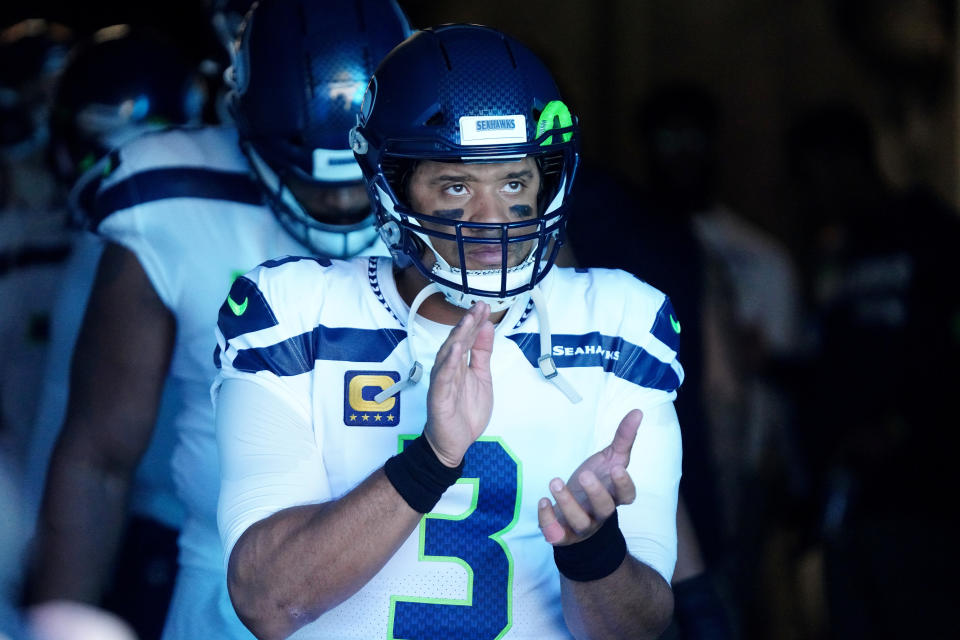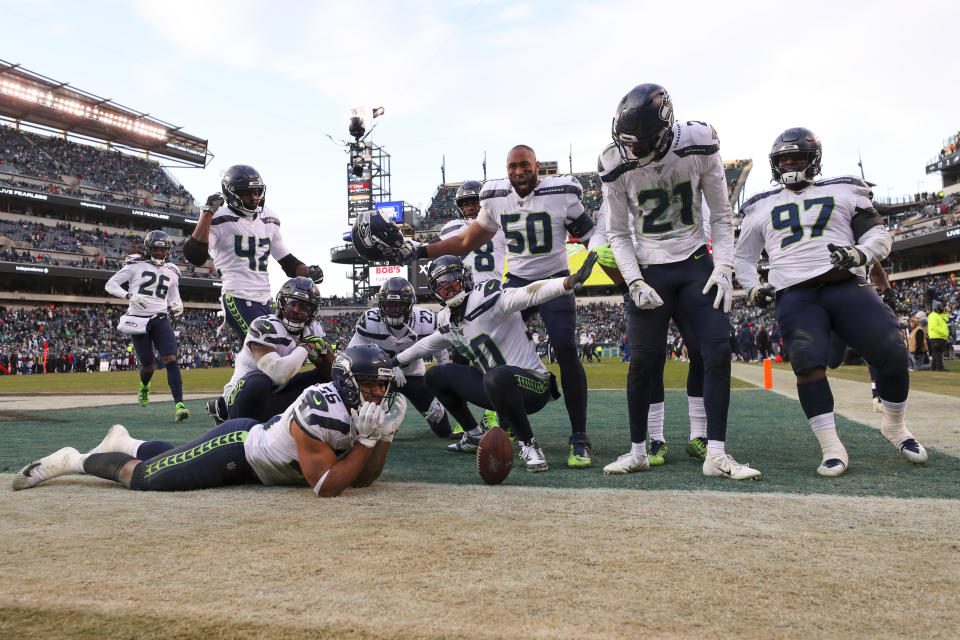Russell Wilson must be close to perfect if the Seahawks want to win the Super Bowl
By Ben Linsey
The Seattle Seahawks’ 26-21 loss to the San Francisco 49ers on Sunday was just the second time in 12 one-score games this season they didn’t find a way to come out on top.
They have Russell Wilson to thank for that glistening record.
If it weren’t for Ryan Tannehill’s second-half push, Wilson would have finished the 2019 regular season as PFF’s highest-graded quarterback. This has been Wilson’s best season, even if his MVP candidacy has lost its luster in recent weeks. He has been nearly perfect despite adverse conditions, and he’s willed this overperforming roster to an 11-5 record.
The problem for the Seahawks as the playoffs loom is that they can’t afford for Wilson to not be the best player on the field. There’s no margin for error.

Wilson’s passer rating under pressure was fools’ gold
This should be prefaced by saying that Wilson is no stranger to pressure in the pocket. He’s the only quarterback in the league to have been pressured on over 40 percent of his dropbacks since entering the NFL in 2012, and in the context of his peers, Wilson has thrived in those situations. His 79.6 passer rating under pressure since 2012 is first among 32 qualifying quarterbacks. No one has been in more bad situations, and no one has been better at making the most out of those opportunities.
As the Seahawks raced out to a 7-2 record over the first nine weeks of this season while Wilson built his MVP case, not much had changed. Wilson was under pressure on 41.6 percent of his dropbacks over that span. The difference was that he was simply playing on another stratosphere than the rest of the NFL. The Seahawks were averaging 6.1 yards per pressured dropback (tied for second best in the league), and as for Wilson himself, he paced the league by a wide margin with an 85.6 PFF passing grade and a 112.1 passer rating when under pressure. (For context, the average passer rating when kept clean in the NFL this season is 99.8.)

Since the first 49ers matchup in Week 10, the Seahawks have averaged a league-low 1.0 yards per pressured dropback. Yes, that is lower than the Devlin Hodges-led Pittsburgh Steelers and the David Blough-led Detroit Lions.
Over that span, Wilson’s sack rate jumped 10 percentage points, and his passer rating under pressure dropped all the way to 49.4 (26th among 32 qualifiers). With Seattle’s best lineman Duane Brown out for the season and defenders getting pressure early, the Seahawks need something closer to what we saw from Wilson early in the season.
Seahawks’ defense surviving amid instability
Defense was a staple of the Seahawks’ Super Bowl contending squads earlier in the decade, but the decline through this season has been noticeable.
After ranking among the top-five defenses in the NFL in yards allowed per pass play every season from 2011 to 2015, Seattle has finished outside of the top 12 every season since 2016, with finishes outside the top 20 in each of the past two seasons. In fact, their rank in overall yards per play allowed this season is just 27th.
This is no longer a top-tier defense. In many ways, it’s been a bottom-tier defense that is being saved by one thing: turnovers.
We’ve seen the turnovers story before. Forcing turnovers year-over-year and even week-over-week is not something that can be relied on. It’s volatile. The 2017 Jacksonville Jaguars and 2018 Chicago Bears tell cautionary tales of how much stock we should put into the repeatability of turnovers in those kinds of numbers.
If you look at the four teams that have led the league this season in offensive turnovers forced, you’ll find the Pittsburgh Steelers leading the way with 37, the New England Patriots not far behind with 33, and then the Vikings (30) and Seahawks (29). The yards per play allowed of those teams in order is: 4.3 (3rd), 4.1 (1st), 4.9 (13th), and 5.5 (27th).
Percentage of plays allowing a first down or touchdown tells a similar story, with the Steelers, Patriots and Vikings all residing in the top-12 teams while the Seahawks sit at 31st. The group contains two great defenses, an above-average defense and a bad defense that has been on the right side of turnover luck.

Can Russell Wilson alone lead Seattle to Super Bowl?
Wilson dropping dimes in the face of pressure and leading comebacks while his defense forces turnover after turnover is a fun brand of football. It’s how the Seahawks sit at 11-5 despite a smaller point differential than the Tampa Bay Buccaneers in 2019. And with Wilson on the field, there aren’t going to be too many contests where Seattle doesn’t have the better player at the league’s most important position.
The Seahawks have relied on that ace in their pocket to a fault, taking for granted that he can make a play against an oncoming pass rush or bring his team back from a deficit late in the game. They should be using their best player on early downs and early in games to build a lead when the passing situations are more favorable.
Otherwise, Wilson needs to be perfect for the Seahawks to win, and we’ve seen that situation before. That strategy with this roster would seal the fate of Seattle’s season.
More from Yahoo Sports:

